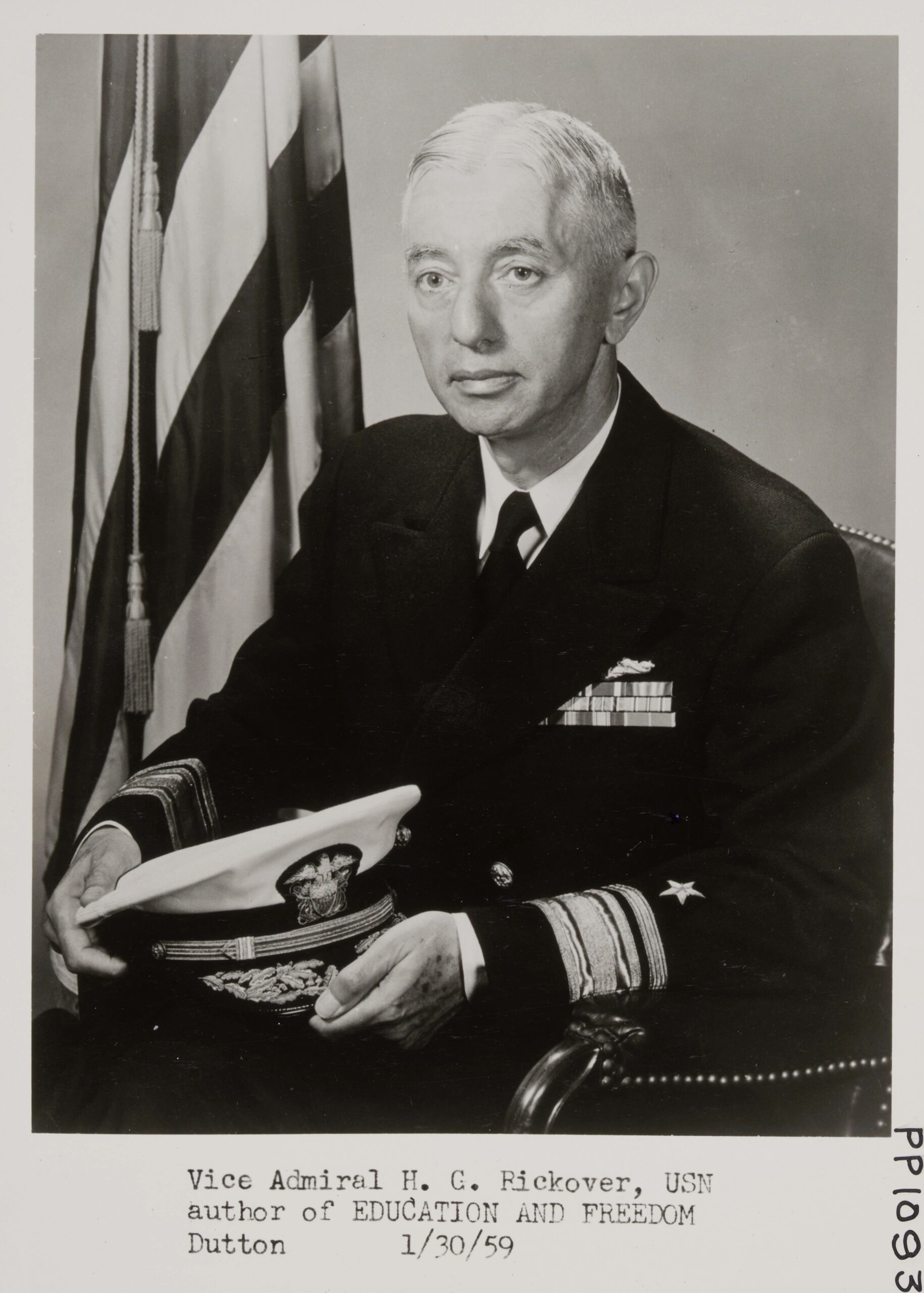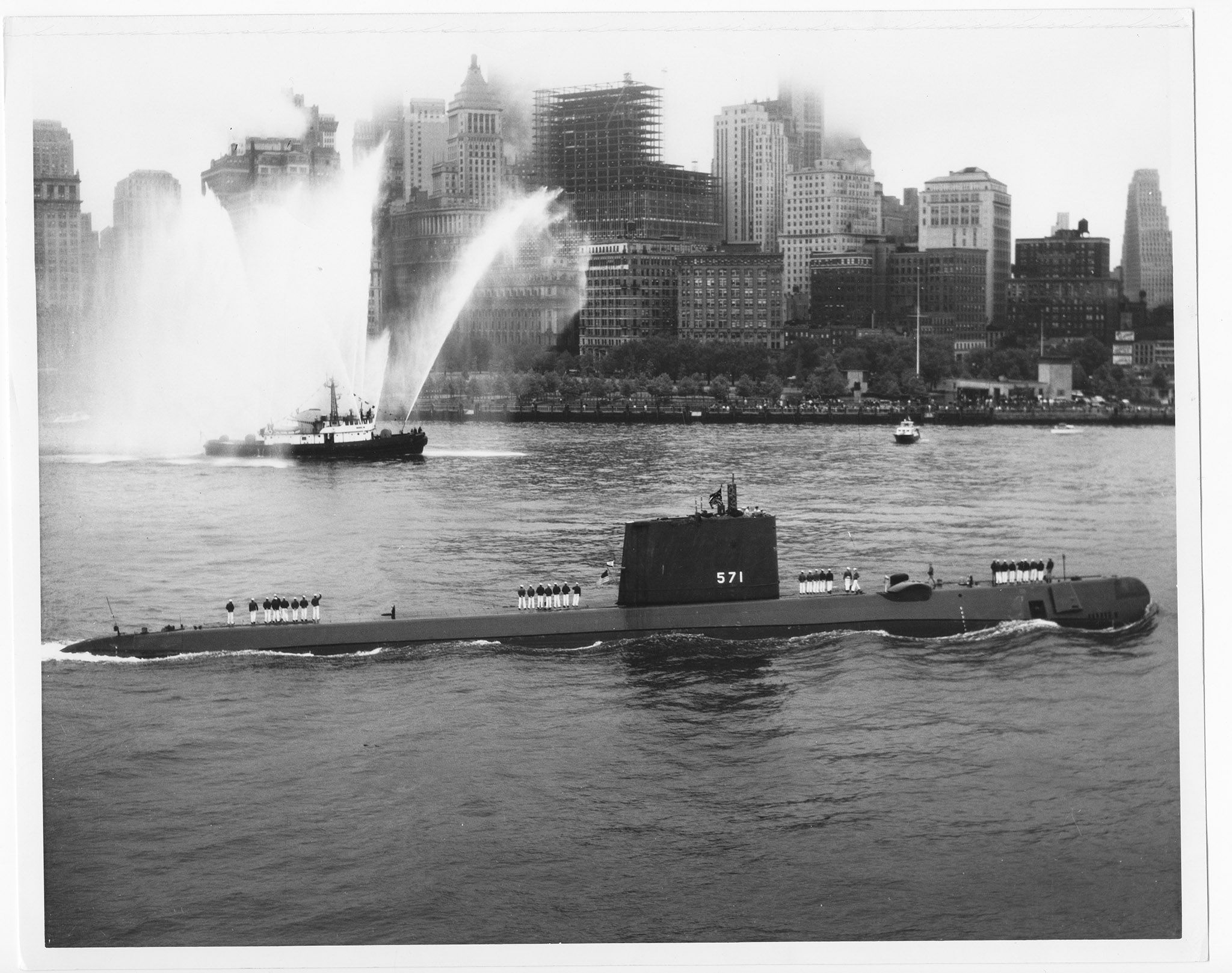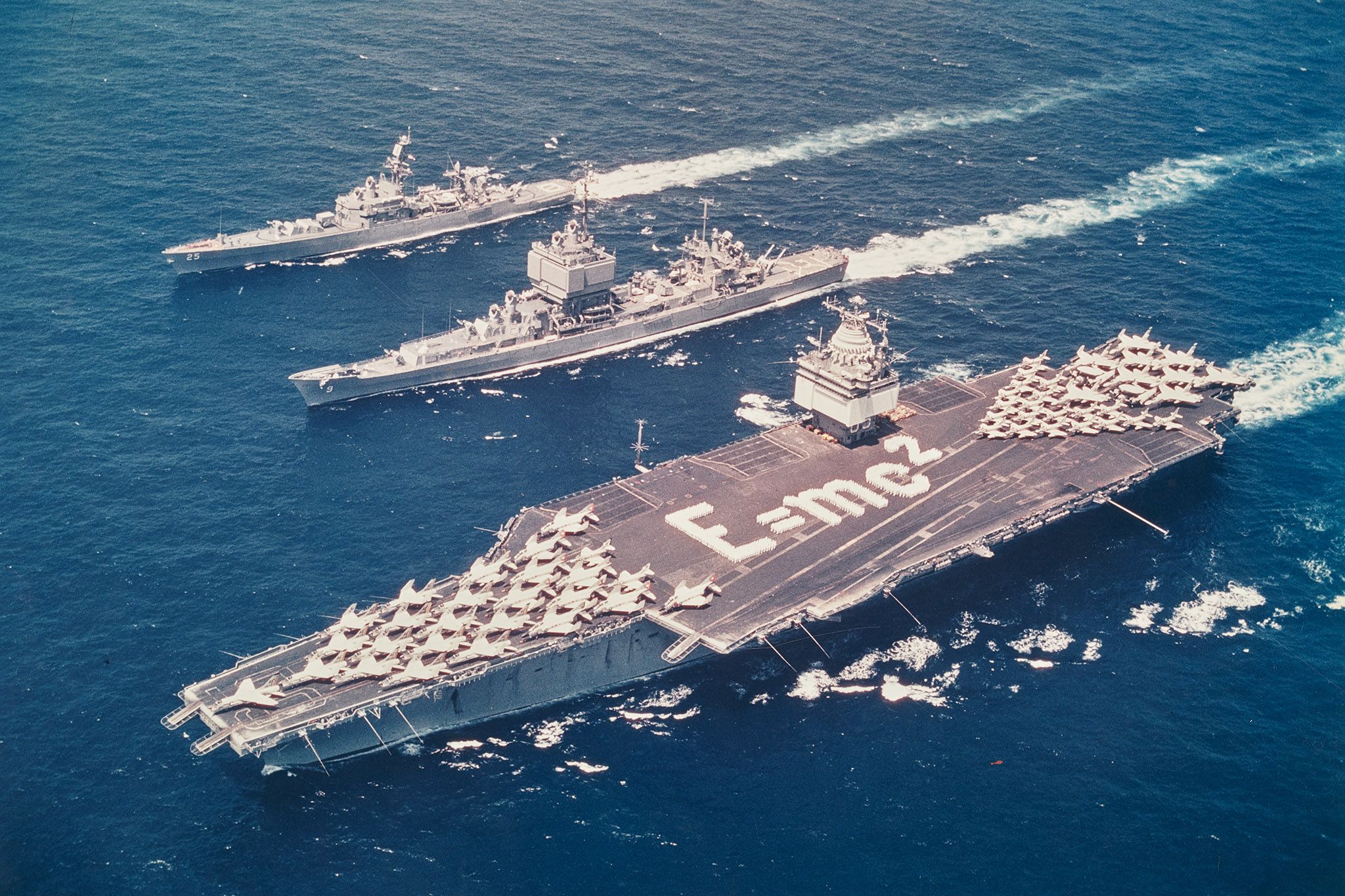A few years ago, I was researching Newport News Shipbuilding and why it is the only builder of nuclear-powered aircraft carriers for the US Navy. While I did not come across an answer, I did come across the name of a sailor who was unknown to me and might be unknown to others outside the military and engineering community. Yet his accomplishments revolutionized the Navy and continue to be noted today.
Allow me to introduce Admiral Hyman G. Rickover, the father of the Nuclear Navy.

The Mariners’ Museum and Park P0001.016-01—PP1093
Humble Beginnings and Early Navy Years
Hyman George Rickover was born on January 27, 1900, in Makow, Poland (then part of the Russian empire). During the Revolution of 1905, Rickover’s family fled Poland, arriving first in New York City. They later settled in Chicago, where his father worked as a tailor. After high school, young Rickover was appointed to the United States Naval Academy. He graduated in 1922 in the top quarter of his class.
Rickover’s first assignment was the destroyer, La Vallette. During his first year, he became the ship’s engineering officer. A few years into his career, Rickover received his M.S. in Electrical Engineering from Columbia University. His early years in the Navy saw Rickover serve in many roles, including submarine duty and assignments in the electrical section of the Bureau of Engineering and the Bureau of Ships.
Time at Oak Ridge
In 1946, Rickover and a handful of other naval officials were assigned to Oak Ridge, Tennessee, as part of a project to develop nuclear energy for military and civilian use. Their job was to become familiar with atomic energy and how the Navy could use this technology. The Navy planned to use nuclear technology on surface ships. However, Rickover, a qualified submariner, believed that nuclear power would better serve the Navy in submarines. During World War II, US Navy submarines primarily operated on the surface due to diesel engines’ exhaust, and they submerged only to attack or evade an attack. Once submerged, submarines used battery-powered electric propulsion. But using batteries for propulsion did not allow for fast speeds and gave submarines a finite time underwater based on the amount of power in the batteries. Rickover’s vision was that a submarine using nuclear power would be a true submarine: it could stay submerged indefinitely and travel at a fast speed while submerged.
Rickover shared his vision with the chief of naval operations, Admiral Chester Nimitz. A fellow submariner, Nimitz agreed with Rickover. After receiving support from the secretary of the navy, Rickover began working on a reactor for submarines.
Research and Development
With the approval to develop the reactor, Rickover began to develop the Mark I reactor prototype, a Submarine Thermal Reactor (STR) built by Westinghouse. It used pressurized water to transfer heat generated from the reactor to a steam generator. The steam generator would then produce steam to power the turbine.
With a self-imposed deadline of January 1955, Rickover decided to develop the reactors on a concurrent development timeline. To do this, Rickover worked off a few assumptions. First, he assumed that the propulsion reactor’s design, development, and construction were primarily matters of shrewd, sophisticated engineering. Second, he assumed that there were no unknowns (as far as the laws of physics), making it impossible to build a small, high-powered reactor that a naval crew could operate. By developing the reactors simultaneously instead of sequentially through evolution (where models evolve into a workable prototype that evolves into a usable reactor), Rickover decided that the prototype Mark I reactor and the usable Mark II reactor would be developed simultaneously. The slogan for this was “Mark I equals Mark II.” However, the symmetric property of equality did not apply to the reactors. Rickover mentioned that Mark II did not equal Mark I. The experiences of the Mark I were to translate into an improved, simplified, and reliable Mark II reactor for use in submarines.
Testing the Mark I
The land-based Mark I prototype started operation in the spring of 1953. At first, the reactor achieved a power level of .01 horsepower. Then test operators gradually increased reactor power in increments of 5% and analyzed conditions with each increase. With the increase in power, the reactor continued to work well. Heat transfers followed predictions without any indications of overheating and radiation levels significantly below what the engineers calculated. Rickover decided it was time to thoroughly test the reactor by simulating a cruise across the Atlantic. He believed that if this were successful, it would end any doubts about nuclear power being a feasible means for propelling ships.
The test proved a success. The reactor ran well, with the only issues being the steam plant and the mechanical equipment. The nuclear components and the control drive mechanism worked well. Naval nuclear propulsion was now possible.
“Underway on Nuclear Power”

The Mariners’ Museum and Park P0008-01—PN11980STN
On January 17, 1955, Nautilus SSN-571 with the Mark II reactor installed (designated as the S1W: submarine platform, first-generation core, Westinghouse design contractor) began its sea trials. The trial personnel included Rickover, then-Commander Eugene P. Wilkinson, commander of Nautilus‘s crew, Carleton Shugg, officials from Electric Boat (builder of Nautilus), other contractors, and officers from various navy commands. Not long after leaving the pier, Commander Wilkinson had a crew member relay this message to the shore: “Underway on Nuclear Power.” During the sea trials, the Nautilus reactor flawlessly operated in all conditions and performed admirably during its shakedown cruise. It sailed entirely submerged from the Connecticut coast to San Juan, Puerto Rico. The cruise was the longest that a submarine traveled fully submerged (1,300 miles) and the fastest a submarine had traveled (16 knots) for longer than an hour.
On a subsequent cruise, Nautilus traveled 1,396 miles at an average speed of over 20 knots. What impressed naval officials more was Nautilus‘s performance during operations. It was undetectable to surface ships, almost immune to air attacks, could overtake a surface force, and, in certain conditions, could evade a torpedo attack. The nuclear-powered Nautilus impressed the officers so much that they believed a nuclear submarine was worth more than many conventional submarines. The Nuclear Navy was born, and Rickover was its father.
Admiral Rickover explains how the Nautilus nuclear reactor works
Legacy

The legacy of Admiral Hyman G. Rickover and Nautilus is undeniable. The use of nuclear-powered propulsion revolutionized naval warfare. It enabled submarines to be more than surface ships that could submerge for brief periods. It enabled submarines to be what they were designed to be: a silent service. In addition, it laid the foundation for the current Navy fleet, consisting of numerous nuclear-powered submarines and 11 nuclear-powered Nimitz-class aircraft carriers, with the new Ford-class carriers now being built. The nuclear-powered US Navy exists because of Rickover’s vision and tenacity. However, as much as Rickover’s determination allowed him to create and develop a nuclear reactor for the Navy, his tenacity caused his career to be bumpy.
During his work on the reactor, Rickover was passed over for promotion. The third time he was passed over, Rickover was to retire per US Navy regulations. However, Rickover petitioned Congress, and Congress promoted him from captain to admiral in 1958. Over the next few years, Rickover remained the authority on naval nuclear power by interviewing and personally selecting all naval personnel who wanted to work with naval nuclear power or command a nuclear ship. Rickover retired in 1982 after 63 years of service. He passed away shortly after and is buried in Arlington National Cemetery.
Sources
Gimpel, Herbert J. The United States Nuclear Navy. The Watts History of the United States Navy. New York, NY. Franklin Watts, Inc., 1965.
Hewlett, Richard G., and Francis Duncan. Nuclear Navy. Chicago and London: The University of Chicago Press, 1974.
Oliver, Dave. Against the Tide: Rickover’s Leadership Principles and the Rise of the Nuclear Navy. Annapolis, Md.:Naval Institute Press. 2014.
Sullivan, Michae,l “Admiral Hyman G. Rickover: Taking the Atom Undersea.”
https://www.military.com/history/admiral-hyman-g-rickover-taking-the-atom-undersea.html (accessed August 18, 2022).